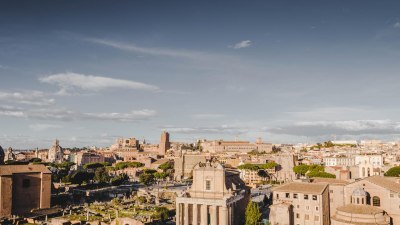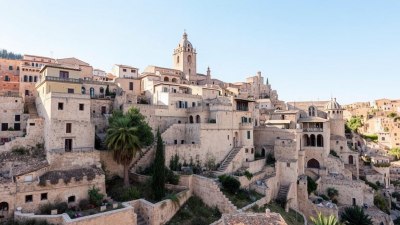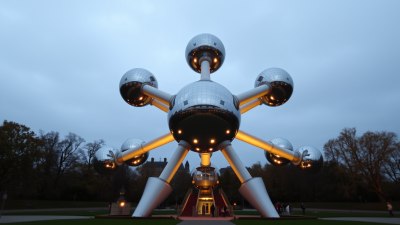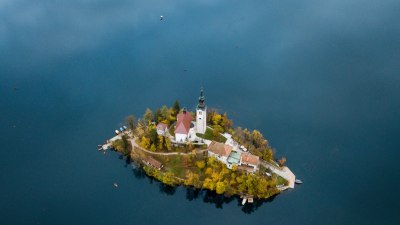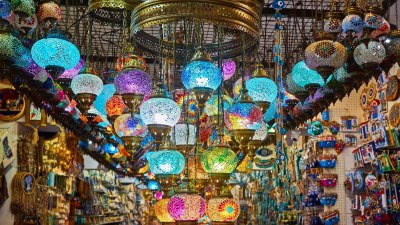Past Lives Linger in Gjirokastër, Albania
Explore the rich history and culture of Gjirokastër, Albania where past lives and stories intertwine.
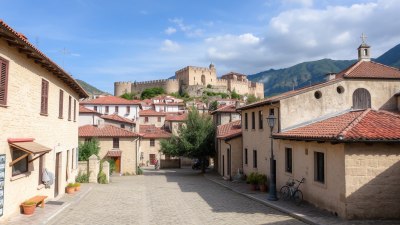
Image created with Flux Schnell
Gjirokastër, a city steeped in history, is located in the southern part of Albania. Known as the "City of Stone" due to its unique architecture and cobbled streets, Gjirokastër is a UNESCO World Heritage Site. The city is not just a visual delight but also a tapestry of past lives that linger throughout its ancient walls and vibrant culture. From the Ottoman-era houses to the breathtaking landscape, each element tells a story, waiting to be discovered by visitors.
Initially settled during the Illyrian period, Gjirokastër has witnessed the rise and fall of various empires. The remnants of these ancient civilizations still echo in the architecture and culture of the region. As you walk through the streets, you can sense the influence of the Ottomans, who ruled over Albania for centuries. The most iconic structure in Gjirokastër is the Gjirokastër Castle, a monumental fortress that dominates the skyline of the city.
A Glimpse into History
The history of Gjirokastër is rich and multifaceted. The castle dates back to the 12th century and has played a crucial role in the region's defense over the centuries. It has served various purposes, including as a military fortress and a royal palace. The castle complex houses several museums, offering insights into the region's past as well as its cultural heritage.
One notable exhibit is the Armory Museum, which showcases a range of historical weapons, providing visitors with a glimpse into the military history of the area. As you wander through the castle, the panoramic views of the Drino Valley remind you of the strategic importance of this historically fortified town.
Architectural Wonders
Gjirokastër is renowned for its well-preserved Ottoman architecture. The town is famed for its characteristic stone houses, which are often referred to as 'kule' or towers. These houses are not just architectural marvels; they represent a bygone era and a lifestyle that revolved around community and family.
Among the most famous houses is the Ethnographic Museum, housed in the former home of the Albanian nationalist leader, Enver Hoxha. This museum provides an in-depth look at traditional Albanian life through its exhibits of national costumes, weapons, utensils, and artifacts. The museum's location, on the steep hills of Gjirokastër, adds to the experience, offering stunning views of the city and the surrounding landscape.
Cultural Festivities
The culture of Gjirokastër is vibrant and full of life, marked by various festivals and events throughout the year. One of the most significant is the Gjirokastër National Folklore Festival, which takes place every five years and attracts participants and visitors from all over Albania and abroad.
This festival celebrates traditional Albanian music, dance, and art, showcasing the rich cultural heritage of the region. The streets come alive with performances, stalls selling regional handicrafts, and food vendors serving traditional Albanian dishes. Visitors can immerse themselves in the local culture, dance along with the folk performers, and enjoy the hospitality of the local population.
The Natural Beauty of Gjirokastër
Beyond its historical significance, Gjirokastër is surrounded by natural beauty. The landscape features dramatic mountains, lush valleys, and flowing rivers, making it an ideal destination for nature lovers and adventure seekers. The nearby Blue Eye spring, a stunning natural wonder with crystal-clear blue waters, is a place that visitors must not miss. It is perfect for swimming, picnicking, or simply enjoying the serene environment.
The area offers several hiking trails, each providing a unique perspective of the landscape. Hiking in this region is not just about physical activity; it’s an opportunity to connect with nature and witness the diverse flora and fauna that thrive in this part of Albania.
Gastronomic Delights
In addition to its historical and natural attractions, Gjirokastër is a culinary delight. The local cuisine features a blend of Mediterranean and Balkan flavors, with an emphasis on fresh ingredients. Traditional dishes such as ‘byrek’ (a pastry filled with meat or vegetables) and ‘qofte’ (meatballs) are popular among locals and have gained recognition from visitors.
Many restaurants in Gjirokastër offer authentic dining experiences, where you can savor traditional dishes while enjoying views of the Old Bazaar. The Old Bazaar is a vibrant area filled with shops selling local handicrafts and products, making it a great place to shop for souvenirs and taste local delicacies.
Preservation Efforts
Preserving Gjirokastër’s cultural and architectural heritage is a priority for both the local community and the Albanian government. Efforts are underway to restore and maintain the historic buildings, ensuring that future generations can experience the unique charm of this city. International organizations, including UNESCO, have played a critical role in supporting preservation initiatives.
Visitors to Gjirokastër can witness the results of these efforts as they explore the city. Many buildings that were once in disrepair have been lovingly restored, allowing the rich history to continue thriving. This dedication to preservation not only enhances the beauty of Gjirokastër but also promotes sustainable tourism in the region.
Community and Hospitality
The people of Gjirokastër are known for their warmth and hospitality. Many locals are eager to share their stories and traditions with visitors, providing a deeper understanding of the city’s culture. Engaging with the community is an enriching experience that adds to the allure of Gjirokastër.
During your visit, take the time to connect with local artisans, learn about their crafts, and even participate in workshops. Whether it’s weaving, pottery, or cooking, these hands-on experiences offer insight into the skills that have been passed down through generations. This interaction fosters a sense of community and leaves a lasting impression on visitors.
Accessibility and Travel Tips
Gjirokastër is accessible by various means of transportation, including buses and cars. It is a few hours’ drive from Albania’s capital, Tirana, and also well connected to other cities such as Saranda and Berat. Investing time in exploring Gjirokastër is worthwhile, as it serves as a gateway to understanding Albania’s rich history and beautiful landscapes.
When visiting, plan your trip during the spring or fall when the weather is pleasant, and the crowds are thinner. Make sure to bring comfortable walking shoes, as exploring the cobblestone streets and hilly terrain can be challenging. Lastly, take your camera, as the picturesque scenery and striking architecture provide endless photo opportunities.
Gjirokastër is not merely a destination; it is an experience. A place where past lives linger, reminding us of the resilience of culture and community. As you journey through the streets, you will feel the echoes of history underfoot, and through stories shared by the locals. Whether it’s the majestic castle, the charming stone houses, or the flavors of traditional cuisine, Gjirokastër invites you to step back in time and explore the layers of its rich past.
In today’s world, maintaining a connection to our history is more important than ever. Gjirokastër serves as a reminder of the power of heritage and the stories that shape our identity. So, take a moment to lose yourself in the magic of Gjirokastër, and let the past guide your journey in the heart of Albania.

